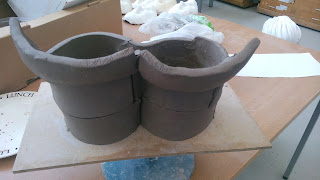http://www.helenburgess.co.uk/
This work i have found is very simular to other artists work which i have found so when making my final piece i have taken influence from alll these peoples way of working and presenting my work.
About
Helen’s work is concerned with a phenomenological experience of space and place and how this can be translated through a visual arts practice.
She utilizes drawing, sculpture, pinhole photography and more recently site-specific photographic installations to explore our perception of space and place. Walking is a central part of her practice and an important element of the process by which she makes work.
Formerly a teacher, she retrained as an artist, graduating with a distinction in an 'MA by Project in Fine Art'.
Her final MA project 'The Space of Place' looked at how pinhole photography could translate a phenomenological experience of space in non-urban place; in doing so it explored the relationship between time and photographic process and approached photography as both a visual and physical construct.
She utilizes drawing, sculpture, pinhole photography and more recently site-specific photographic installations to explore our perception of space and place. Walking is a central part of her practice and an important element of the process by which she makes work.
Formerly a teacher, she retrained as an artist, graduating with a distinction in an 'MA by Project in Fine Art'.
Her final MA project 'The Space of Place' looked at how pinhole photography could translate a phenomenological experience of space in non-urban place; in doing so it explored the relationship between time and photographic process and approached photography as both a visual and physical construct.

















 By using the drawing I produced I shaped the wire ontop to get the same shape. This is what I created. I think it turned out quite well, it shows a sign of emotion.
By using the drawing I produced I shaped the wire ontop to get the same shape. This is what I created. I think it turned out quite well, it shows a sign of emotion. 






